








Irish Seisiún Newsletter
Thanks to our past editors - Mary Gallacher and Bill Padden
and Bill Padden
Editor Tommy Mac 
............
....Today's date and new proverb
To All Session Players
New set to learn just posted.
Sunday's Seisiún
for June 22, 2025
‘Tá dúil ár n-anama sa cheol againn.’
Music is our soul’s desire.
.......Thanks again to
Bob Murphy, Pat Quinn, Randy Powell, Art Jacoby, and Kevin Westley
for supplying photos and info about our sessiuns.
Tom,
We had a fine session today, lots of tunes and an appreciative audience in the pub also.
It's always an inner joy when someone comes up and lets you know that it was special for them to hear the music. Randy got a singular nod for his songs from some folks also!
All in all, a nice time today.
On fiddle were Art, Bob, Anita and Pat. Randy on Bouzouki, Rosemarie on whistles and flute, Grace on Accordion.
Some of the tunes were: Down the Broom, Gatehouse Maid / Banshee, Maid behind the Bar, Sligo Maid / Christmas Eve, Killavil reel, Boys of Ballisodare / Lads of Laios, Earls Chair, Musical Priest / Otters Holt / Humours of Tullycrine, George Rowley's, Off to California / Rolling Waves, Lark on the Strand, Banks of Loch Gowna / Gareghs' Wedding, Fig for a Kiss, Farewell to Whalley Range / Lakes of Sligo Polka, Gurteen Cross, Port Lairge / Garret Barrys, Micheal Hynes jig, Boys of the Town / Tarbolton, Longford Collector, Sailor's Bonnet / Silver Spear, Ships are Sailing, Swinging on a Gate / Camaronion, Donegal reel, Miss Monaughan's / Lark in the Morning, Connaughtman's Rambles, Stan Chapman's to finish off, as usual.
Bob Murphy
Click any of the above logos to go to that site
.
 "That’s
How I Spell Ireland"
"That’s
How I Spell Ireland"
Saturdays at 7 to 8 PM EST.
You can listen on 88.7FM or WRHU.org.
For a request please text me on 917 699-4768.Kevin and Joan Westley
Note: Show will be preempted whenever the NY Islanders have a Saturday game
![]()

Finnegan's Events
Check out their calender
They support us - Let's support them
![]()

E-Mails Received
![]()
Old Ireland
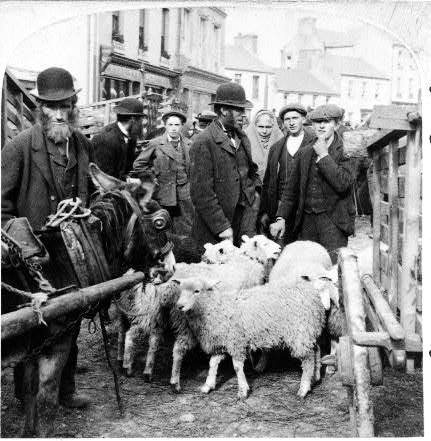
Sheep fair,
Killarney, Co. Kerry
![]()

Ireland Travel
My County Donegal
Billy McFarland
Note: Whenever clicking on a link you will be brought to another web-site. To return here you must click on the BACK arrow.
![]()
Travel Quiz
Can you identify this site and it's location in Ireland?
Answer in next week's Newsletter
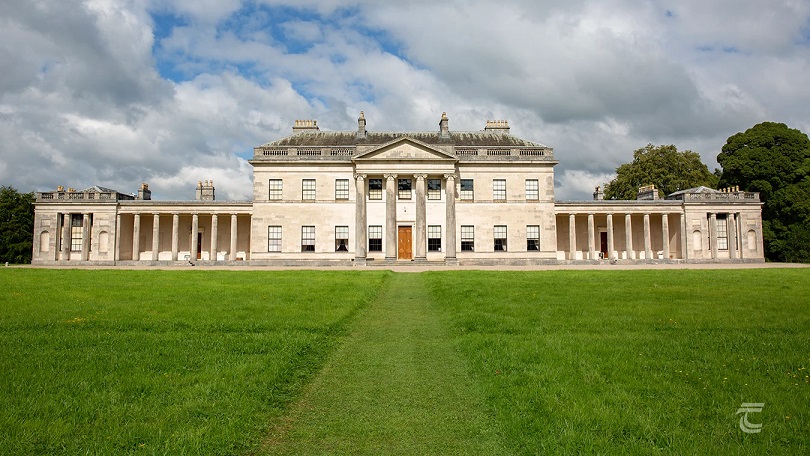
Last weeks Travel Quiz answer
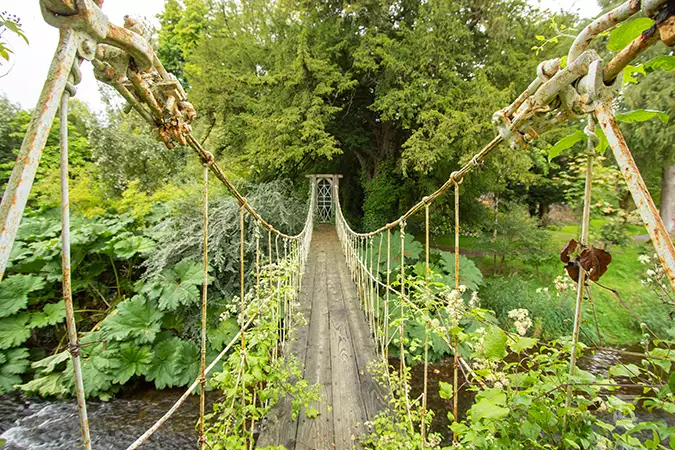
An early 19th century suspension bridge, crossing the River Camcor
on the Birr Castle estate’s grounds
In the town of Birr in County Offaly
![]()
Irish Language
Submitted by our own Anita
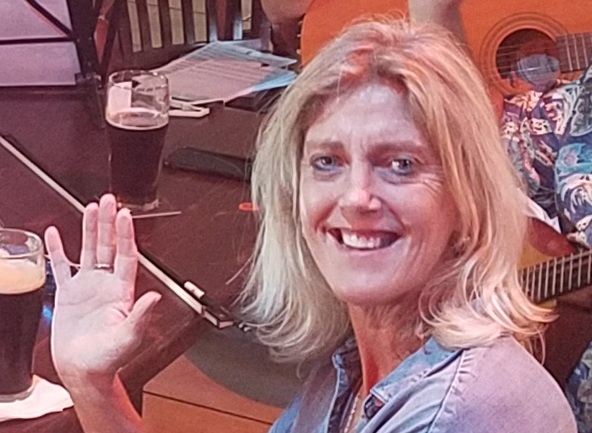
Dia duit Tom,
Since I missed Fathers Day here is the greeting in Irish belatedly. Here are a few other wishes as well.
La na naithreacha sona duit
Happy Fathers Day!
(law na naricha suna duit)
La na maithreacha sona duit
Happy Mothers Day!
(law na maricha suna duit)
La breithla sona duit
Happy birthday!
(la brelaw suna duit)
Nollag shona duit
Happy Christmas!
Slan agus beannacht
Anita
(nulag huna duit)
Have you ever wondered what something would sound like when spoken with an Irish accent?
I'm sure you've come across that problem before in your ancestry research.
With a website like Abair, now you can hear anything you want in an Irish accent!
Free Irish Classes
The classes are over zoom and are held at 12:00 eastern time the 1 st Sunday of every month.
It is basic conversational Irish and open to learners of all ages, especially beginners.
All are invited.
Hope to see you there!
slan go foill. Le dea ghui,
Anita
click here to register
![]()
 ..
..
Chocolate, Guinness, Baileys?
The perfect Irish cookie recipe! Indulge yourself with this super delicious dessert recipe that uses both Guinness and Baileys!
IrishCentral Staff @IrishCentral Mar 29, 2023

Chocolate Guinness cookies with Baileys frosting - what could be a more glorious flavor combo! (Stock Photo) GETTY IMAGES
That sounds about right to us! The three flavors - chocolate, Guinness, and Baileys Irish cream - go perfectly together. The original recipe from the mastermind behind A Beautiful Bite said these cookies "will have your Irish (or non-Irish) eyes smiling."
Guinness cookies with Baileys frosting recipe Makes: 12 " Prep time: 20 mins " Cook time: 13 mins " Total time: 33 mins
Ingredients:
For the chocolate Guinness cookies:
1 cup unsalted butter, at room temp
1 cup white sugar
1 cup brown sugar
2 eggs
½ cup Guinness
2½ cups flour
2/3 cup cocoa
1 tsp baking soda
½ tsp salt
For the Irish buttercream frosting:
4 cups powdered sugar
2 sticks unsalted butter, at room temp
3 tbsp Baileys Irish cream
2 tbsp milk
Method:
Preheat oven to 350°F.
Cream together the butter, sugar, and eggs, add Guinness, and beat in a mixer, on medium, until even and smooth.
In a separate bowl, sift together the flour, cocoa, baking soda, and salt.
Add the flour mixture by the tablespoon to the sugar, egg, and Guinness mixture.
Mix at a medium speed until it comes together.
Refrigerate for one hour.
Drop a heaped tablespoon onto cookie sheets.
Bake for 13 minutes.
Take them out of the oven and let them rest.
Enjoy

If you have a cherished family Irish recipie share it with us.
And if there's a story that goes with it.....even
better! mail click here ![]()
Fireny@aol.com
![]()
filíocht pronounced FILL-ee-uhkht meaning Poetry

In Ireland June
A Lovely Time of Year
by Francis Duggan
In Ireland June's a lovely time of year
The curlew's flute o'er the bog one does hear
And little brown lark a musical speck in the sky
Is carolling sweetly as to the clouds he does fly
The scent of Nature's blossoms in the breeze
In pleasant temperatures of twenty plus degrees
Bluebells bloom on the ditch of the bohreen
And Nature's flowers everywhere to be seen
Contented cattle in lush grass to their knees
Laying chewing their cuds in the shade of the leafy trees
The beauty of Nature for all to admire
And of singing her praises could one ever tire
The robin's song melodious and clear
In Ireland June's a lovely time of year.

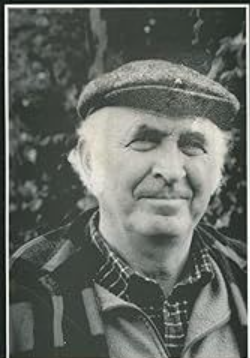
Frances Duggan has been writing since 1973 and estimates that he has written around 9,000 pieces of poetry online.
He has lived in Australia for most of his life but was born in County Cork, Ireland.
He enjoys writing about nature and creating connections between humanity and non-human nature.
![]()
Stories and Tales
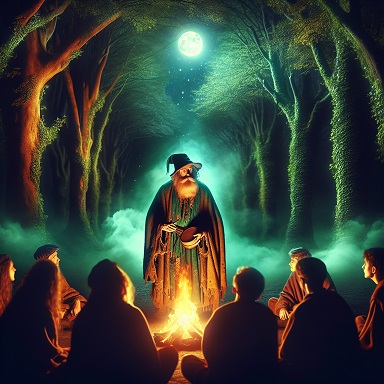
"seanchaí"
(pronounced "shan-a-key")
comes from the Irish words "sean" meaning old and "caí" meaning to tell.
The story of Chicago May, Irish Queen of crooks
From rebellious Irish teen to a serial criminal who was embroiled with some of Irish America's best-known gangsters - meet Mary Anne Duignan.
Matthew Calfe @IrishCentral Jun 18, 2025
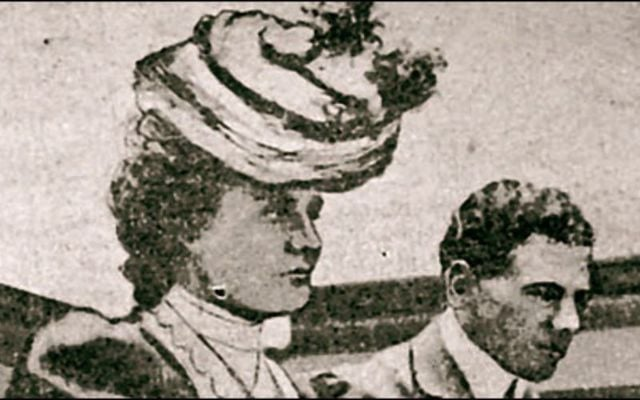
Court sketch of Chicago May, aka Mary Anne Duignan, on trial in 1907.
The story of Chicago May is famous in the world of criminology. It’s the story of an absconding Irish teenager turned serial criminal operating across two continents who marries for money, cracks safes with explosives, and has relationships with some of the Irish-American underworld’s best-known figures.
Mary Anne Duignan became a minor celebrity in the British press for her exploits and published a set of memoirs of her criminal past in 1929, the year of her death.
Born Mary Anne Duignan in 1870, Chicago May was one of the more infamous Irish expatriate criminals to ply their trade in the States in the late 19th and early 20th centuries. Running away from home with her parents’ life savings before her 20th birthday, May went to Liverpool, where she bought a ticket for the United States with her ill-gotten gains.
Once in the United States, she soon ingratiated herself with the criminal underworld and several of its famous figures, including Dal Churchill, who taught her a lot of the tricks and skills that would come in useful later in her long career. She courted several mobsters and even managed to work herself into the attention of an aristocrat and an Army officer, only to divorce him several months later for a $10,000 settlement. She even took on work in a theater as a way of casing out potential victims. Eventually, her criminal past caught up with her in the form of an NYPD arrest warrant, so she fled to London.
In 1900, May met a young Irish mobster named Eddie Guerin, and they begin a relationship after May traveled to Paris for the 1900 World’s Fair, in search of wealthy individuals to rob. Edward Guerin was never too far from crime and notoriety: He appears multiple times in the US, British and even French arrest records.
Guerin was the chief architect of a planned theft from the offices of The American Express Company in Paris. With May as his accomplice, Guerin used a lot of explosives to blow open the safe.
However, for this theft, he was caught and imprisoned. May got away, returning to London to find the funds to secure Guerin’s release. However, after another brief spell in prison for trying to spring Guerin with forged documents, May moved on with her life. She struck up a relationship with a man known as Charley Smith. Unsurprisingly, Eddie Guerin was not too pleased about May and Smith’s relationship when he made good his escape from a French penal colony and arrived back in London in 1907. However, before Guerin could take his vengeance, he was shot by Smith. Both Smith and May are immediately arrested, the shooting taking place in broad daylight in Russell Square in front of two uniformed Police Officers.
May went on to be sentenced to 15 years' Hard Labour for attempted murder, serving 10 years of the sentence before her deportation to the United States. Guerin remembered this attack long after the event.
Back in the US, May continued to ply her trade as a prostitute until her death in 1929. Her memoirs, "Chicago May Her Story: A Human Documentary by the Queen of Crooks", lay out her career from her humble beginnings as an absconded teenager to a master thief.
* This article was published as part of a 2016 partnership between IrishCentral and Findmypast, updated in 2025.
![]()
OK, here's a special treat from Tommy Mac
Roll up the carpets and get ready to dance
Paddy O'Brien - Mum And Dad Waltz
![]()
Céad Míle Fáilte
and welcome to your Letter from Ireland
Why Religion Matters in Irish Genealogy
Céad Míle Fáilte – and welcome to your Letter from Ireland for this week. It’s a great time to be out and about in Ireland, with soft weather and bright skies stretching across the county. Last week, we headed to the town of Youghal in East Cork to wander through the medieval quarter of this charming seaside town. What struck me most was discovering a remarkable “row of churches” all located within just a few hundred yards of each other – starting with St. Mary’s Collegiate Church, dating from the 1200s, continuing to a Quaker Meeting House from the early 1800s, and ending at St. Mary’s Roman Catholic Church, built in the late 1700s.
Standing there among these three very different places of worship, I was reminded how deeply religion shaped the lives of our Irish ancestors – and how understanding their faith is crucial to understanding their stories.
Religion in Ireland wasn’t simply about Sunday services – it determined where your ancestors could live, what occupations they could pursue, whom they could marry, and even whether they could own land.
This makes church records one of the most valuable tools in Irish genealogy. That’s why I’m especially looking forward to John Grenham’s upcoming webinar on Irish Church Records in The Green Room. With that session on the horizon, it feels like the perfect moment to take a closer look at this essential piece of your family puzzle.
Already a Green Room Member? You can both read and comment on this letter in the Green Room forum here.
Why Religion Matters in Irish Genealogy
If you’ve spent time digging into Irish family history, you’ve probably noticed how often religion crops up – not just in the records, but in the very shape of your ancestors’ lives. In Ireland, faith was not a private matter; it was interwoven into law, land, identity, and everyday survival.
Catholics, Anglicans, Presbyterians – each tradition left behind different records, followed different customs, and settled in different regions. A baptism might appear in a Catholic register, a marriage in a Church of Ireland record, or a burial in a Presbyterian session book – and unless you know which path your ancestors walked, it’s all too easy to look in the wrong place.
Even emigration was shaped by religion. Catholics fled famine and discrimination; Presbyterians left under economic pressure and political frustration; Anglicans often emigrated as part of colonial administration or military service. Faith, in short, tells us not only where to look – but why our ancestors moved in the first place.
Early Christianity in Ireland: (432–1170)
When St. Patrick arrived in Ireland in the 5th century, he didn’t sweep aside the old beliefs – instead, he transformed them. What emerged was a uniquely Irish form of Christianity, marked by monasteries that became the heart of education, health care, and art for centuries to come.
Places like Clonmacnoise, Glendalough, and Skellig Michael weren’t just religious sites – they were the intellectual and cultural centres of early medieval Ireland. The Irish Church followed its own rhythm, with different practices around Easter, married clergy, and a looser, more local organisation than Rome might have liked.
For genealogists, this period is less about records – which are rare – and more about context. It explains why early documentation is patchy, and why later record-keeping had to develop from scratch after centuries of oral tradition.
The Normans Arrive: Structure and Script (1170–1540)
The arrival of the Anglo-Normans brought profound changes to Irish life, including the introduction of more formal religious structures and record-keeping. Cistercian monasteries appeared, echoing the Continental style. But it was the Franciscan friars, arriving in the 1200s, who left a deep mark on Irish families.
The Franciscans didn’t just preach – they learned Irish, supported native culture, and recorded family histories. Some of the most important genealogical manuscripts, such as the Annals of the Four Masters, were compiled by Franciscans, often working in difficult and dangerous times. Their work preserved not only religious teachings but names, places, and events crucial to Irish family history.
Reformation and Resistance (1534–1690)
With Henry VIII’s break from Rome, Ireland was drawn into the religious struggles of England. The Church of Ireland became the official church, but most of the population remained staunchly Catholic – a divide that would endure for generations. In Ulster, the religious landscape changed dramatically. The Plantation policies brought Protestant settlers – mainly Presbyterian Scots and Anglican English – into lands previously held by Gaelic Irish families. This reshaped the region’s demographics and left lasting effects on records and identities.
If your ancestors came from Ulster, knowing whether they were:
Gaelic Irish Catholics
Presbyterian Scots
Anglican English
Or families who moved between faiths
can reveal important clues about their status, opportunities, and eventual migration paths.
The Penal Laws (1690–1829)
This era brought some of the harshest restrictions in Irish history. Under the Penal Laws, Catholic worship was suppressed, education banned, and property ownership severely limited. Even Presbyterians, though Protestant, were discriminated against – excluded from power and often pushed toward emigration.
For genealogists, the effects of this time are clear: early Catholic records are scarce, often incomplete, or lost entirely. Priests worked underground, sometimes recording baptisms and marriages on scraps of paper. Families were displaced, especially from good farmland to more marginal regions. Some even converted to the state religion to hold onto land – and these shifts can cause confusion in the records.
This was also the great age of Ulster Presbyterian emigration. Between 1717 and 1775, tens of thousands left for the American colonies, seeking both religious freedom and economic survival. Their descendants – the Scots-Irish in the United States – would shape the frontier, particularly in Pennsylvania, Virginia, and the Appalachian regions.
Catholic Emancipation and a New Era (1829–1870)
The success of Daniel O’Connell’s campaign for Catholic Emancipation in 1829 marked a turning point. For the first time in over a century, Catholics could worship freely, build churches openly, and resume many public roles.
Across the country, a new wave of church construction began. The great Catholic churches you see in towns and cities today often date from this period. More importantly for researchers, this was when most parishes began to keep detailed and consistent baptism, marriage, and burial records – many of which survive today.
If you’ve had success tracing your family through parish registers, it’s likely thanks to the reforms and revivals sparked in this period.
Your Ancestors’ Faith Journey
The story of your Irish ancestors isn’t complete without their religion – not just as a belief system, but as a living force that shaped their world. Faith influenced where they lived, how they married, whether they could read, own land, or even remain in Ireland at all.
Whether they were Celtic monks, Franciscan scholars, Plantation settlers, Catholic hedge-school pupils, or Presbyterian emigrants, their beliefs left traces. These might appear in a baptismal entry, a marriage registry, or even in the choice of name passed down through generations.
That spiritual heritage often travelled with them – to Canada, Australia, England, the United States – and continued to shape family traditions long after their feet left Irish soil.
This Thursday in The Green Room, we’ll be welcoming John Grenham, in our live webinar series, to walk us through how to find and use Irish church records – from Roman Catholic and Church of Ireland to Quaker and Presbyterian. I hope you’ll join us for what promises to be a rich and practical session.
In the meantime, I’d love to hear: What was the religion of your Irish ancestors? Have you found any of their records in Irish parish registers?
Do enail me at Fireny@aol.com to let me know....Tommy Mac
That's it for this week,
Slán for this week,
Mike.
![]()
The Ardagh Chalice -

This is of course one of the big treasures at the Dublin National Museum. You can see the work that went into this 9th century piece of art.
The minute craftmanship is amazing.
The tools that made this precious cup no longer exist so its anyone's guess on how they did it.
Definitely, a lot of patience went into making it.
As I understand it this chalice was made about 200 years before Brian Boru came to the throne.


![]()
5-Tune Friday
Hi Thomas,
Paraic here with this week’s Five Tune Friday!
This week’s selection is bursting with character, creativity, and a few unexpected twists. From a jig honouring Ireland’s beloved spuds to a hornpipe reimagined with traditional Chinese instruments, this collection has something for every mood and player.
Let’s get into it!
"Frank’s Reel" – Reel
A classic session reel that never fails to lift the hearts and get feet moving. This week’s version by The Bloomers is full of spirit and lift, making it an excellent go-to for any session set. I've always loved this tune, I think you will, too.
![]()
"An Comhrá Donn" – Hornpipe
This jovial hornpipe is a great tune for building rhythmic control and bounce, and this week’s version is especially unique. What makes this one interesting is it’s played on traditional Chinese instruments instead by the group The Xi’An Si.
![]()
"Guggerin’ Spuds" – Jig
As Irish people, we do love our spuds. And so, we have this lively jig in celebration of that! This rendition I found is brought to you by Fergal Scahill, who is accompanied by a banjo ensemble from Scoil Acla summer school. HUP!
![]()
"The Yellow Glove" – Reel
Fergal Scahill is back again with "The Yellow Glove", a toe-tapping reel full of triplets and flowing melody. Fergal’s signature fiddle magic shines in this one, with effortless phrasing and a great lift. I think it's the perfect tune for stepping out with a bit of sunshine.
![]()
"The Queen of the West" – Hornpipe
Possibly inspired by the legendary Queen Meabh of Connacht, this hornpipe is elegant and traditional. It's a great one to learn by ear, too! This week’s version by Mossie Martin on fiddle captures all the beauty and grace of this classic tune. A lovely way to round off this week’s set.
![]()
That’s all for this week, folks! Whether it's down to the whimsy of spuds, the majesty of queens, or how Irish music is loved around the world, I hope you enjoy exploring these tunes over the weekend. As always, if you need help with music, instruments, or recommendations, just give me a shout.
Slán go fóill,
Paraic McNeela
McNeela Instruments
I bought my Bodhran from Paraic and I am very satisified with the quality and the service.
If you visit the store please let Paraic know you heard about it
from Tommy Mac and the Tír na mBláth. Tim Finnegan's Pub, Irish Seisiún Newsletter
![]()
Take a tour through Ireland’s literary landscape
This interactive story map lets you travel the Ireland of Joyce, Yeats, Swift, Shaw, Wilde and many more.
Sheila Langan @SheiLangan Jun 17, 2025
Yeats Country, Benbulben in County Sligo.Yeats Country, Benbulben in County Sligo. Tourism Ireland / Irish Content Pool
A literary tour of Ireland of now easier than ever with thanks to this interactive map.
Ireland is also known as the Island of Saints and Scholars, and it’s little wonder why.
For such a small nation, it has an illustrious literary past and present: four Nobel laureates, Man Booker awardees, the authors of "Gulliver’s Travels", "Dracula", and many more enduring favorites.
This interactive story map, created by Michelle Mangan of The Dunloe Hotel in Co. Kerry, leads you on a literary tour of Ireland – from the places that inspired the works of Ireland’s most prolific poets and writers – Wilde, Joyce, Beckett, O’Connor, Heaney, Kavanagh, Swift, Shaw and Yeats - to the locations where the writers grew up, where they attended school, and where they crossed paths.
Happy travels!
*Originally published in 2016, updated in June 2025.
![]()
submitted by Lawrence Mahoney
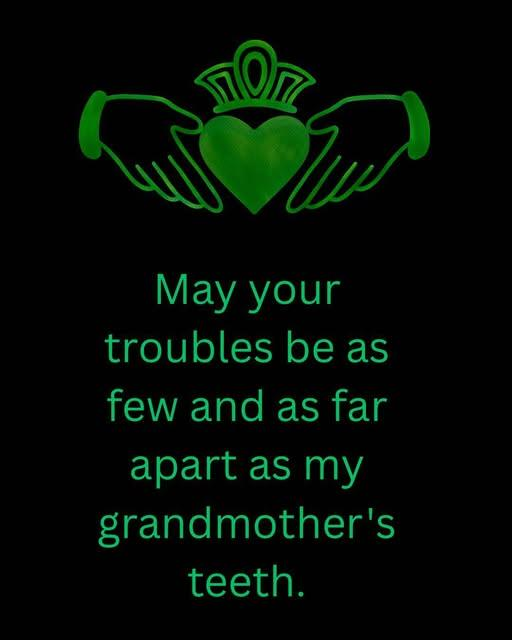
![]()
Tommy Mac here.
For years I have been asking my readers to submit
some of their own memories on various subjects.
But, I have only had a handful of replies over all those years.
Come on now!
I'm sure many of you have recipies, memories of your own,
or stories handed down that would be of interest.
Please.....
Send in some of your actual memories of family stories to share with everyone.
If you don't want your name to appear the let me know.
Send them to me, Tommy Mac at Fireny@aol.com
![]()
News of Interest,,,,,
Aer Lingus proudly partners with Dr Norah Patten
ahead of historic space mission
The airline pledged its support through a two-year partnership, ensuring Dr. Patten can travel between her home in Ireland and North America—the hub of her groundbreaking research preparation.
IrishCentral Staff @IrishCentral Jun 17, 2025

Dr Norah Patten. Aer Lingus
Aer Lingus is proud to announce its partnership with Dr Norah Patten as she prepares for her groundbreaking mission to become the first Irish person in space.
With a shared commitment to building new connections and inspiring exploration, Aer Lingus will partner with Norah as she prepares for her first ever research spaceflight.
A trained aeronautical engineer and passionate champion of STEM education, Norah has devoted herself to inspiring future generations of scientists, engineers, and trailblazers. As she moves closer to making history, Aer Lingus has pledged its support through a two-year partnership, ensuring she can travel between her home in Ireland and North America—the hub of her groundbreaking research preparation.
In advance of her spaceflight, Norah is undergoing intensive training and conducting advanced research at the National Research Council (NRC) in Canada, working alongside distinguished International Institute for Astronautical Sciences (IIAS) researchers, Dr. Shawna Pandya and Kellie Gerardi.
Norah’s dream of going to space started when she first visited the NASA Glenn Research Center in Cleveland at the age of 11. Now destined to become the first Irish person in space, Norah continues to travel between Dublin and North America as she prepares for her spaceflight. Her preparation has included spacesuit testing and evaluation, microgravity research, as well as undertaking high-G flights designed to experience gravitational force. Aer Lingus will fly Norah as she crosses the Atlantic while undertaking this vital space research.
For space enthusiasts, North America is a must-visit destination, offering unparalleled opportunities for discovery. From the Kennedy Space Center in Florida, where you can witness rocket launches, to the NASA Glenn Research Center in Cleveland, where aerospace innovation thrives. There’s also the Smithsonian National Air and Space Museum in Washington, D.C., packed with historic spacecraft and astronaut memorabilia.
Dr Norah Patten said: “My mission to become the first Irish person in space is a huge undertaking and I’m grateful to Aer Lingus for their support on my journey. As the flag carrier of Ireland, Aer Lingus has long inspired people to travel and to explore new destinations. This partnership with Aer Lingus will enable me to travel seamlessly to North America to continue my practical preparation and research, with each step bringing me closer to making this dream a reality. Together, I hope we can ignite the imaginations of young dreamers, encouraging them to undertake their own adventures – wherever they may be.”
Lynne Embleton, Aer Lingus Chief Executive Officer, said: “At Aer Lingus, our mission is to connect people, places, and possibilities—and Dr Norah Patten’s extraordinary journey to become the first Irish person in space is the perfect embodiment of that spirit. Her determination proves that with ambition, dedication, and the ability to dream big, anything is possible.
"We are immensely proud to support Norah as she embarks on this historic journey over the next two years. This is a once-in-a-generation milestone for Ireland, and we have no doubt that her mission will inspire people across the nation and beyond to pursue their own aspirations. Norah is a true trailblazer, paving the way for Irish women in STEM and leaving a legacy that will resonate for generations to come.”
Originally from Co Mayo, Dr Norah Patten holds multiple accolades to her name, which include being an astronaut candidate with the International Institute for Astronautical Sciences, an award-winning author and STEM (Science, Technology, Engineering & Maths) advocate and a former global faculty member at the International Space University.
![]()
The Roskilde (Irish) Viking ship
from website "Ireland in the Rare Old Times"
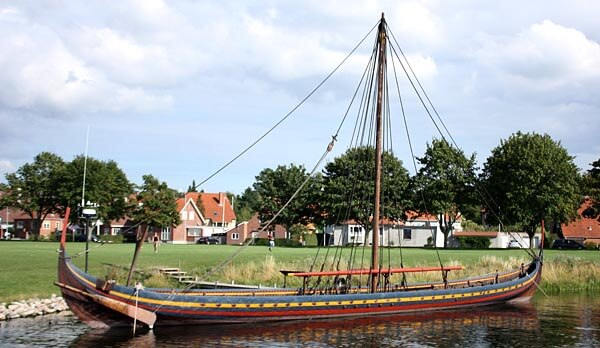
You can go to Roskilde Denmark today and see this Viking ship for yourself.
It is now - as I understand it - permanently dry docked as a museum feature.
I believe it was in 2009 when the ship showed up in Dublin Harbour.
People of course did not see why there was a lot of fuss over a Viking vessel. -
Danish scholars have been studying Viking history for decades.
One of the things they discovered was the best built Viking Ships were made in Dublin.
So as a project they decided to build a replica to study the Irish/Viking boat building technique.
And when completed they sailed for Dublin, as special treat.
![]()
Irish exports to the US drop 62% in April after Trump tariffs
US-bound Irish exports plummet €16 billion in April but remain 48.6% higher than April 2024 amid tariff-driven volatility.
IrishCentral Staff @IrishCentral Jun 18, 2025
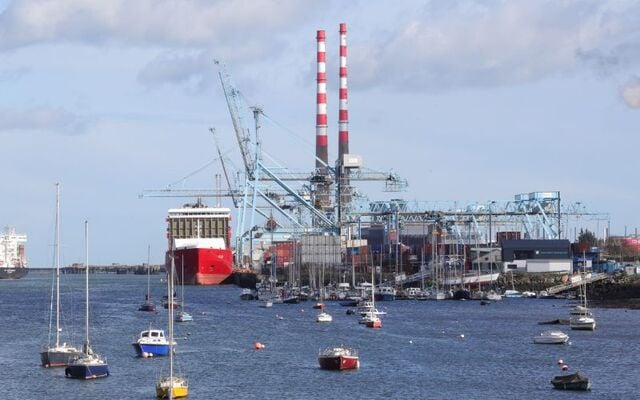
Dublin Port, on the River Liffey. RollingNews
Ireland’s goods exports to the United States plunged by a striking €16 billion in April, sliding from €25.7 billion in March to €9.7 billion, but compared with April 2024, exports to the US climbed by €3.2 billion – a 48.6% year-on-year increase.
April’s figures, released by the Central Statistics Office (CSO), reveal a dramatic shift in Ireland’s trade patterns. Seasonally adjusted goods exports to the US tumbled 62% month-on-month, plummeting €16 billion to €9.7 billion. Yet measured against April 2024, US-bound exports grew from €6.6 billion to €9.7 billion, a 48.6% rise.
At the aggregate level, unadjusted exports of goods in April reached €21.9 billion — up €2.5 billion (+12.7%) compared with April 2024, but down sharply by €16.24 billion (-43%) from March’s €38.1 billion. Unadjusted imports also declined, falling 18% (€2.4 billion) sequentially to €10.8 billion and dipping 0.2% (€18.7 million) vs April 2024 (€10.77 billion).
Economists agree the main factor behind April’s drop-off is a hangover from "Liberation Day" tariffs imposed by President Trump on the European Union in early April. These prompted an initial surge in pre-tariff stockpiling by Irish pharmaceutical and chemical firms, which then sharply unwound in April.
CSO statistician Jane Burmanje noted that April’s export decline “is primarily driven by a decline in exports to the US,” with medical and pharmaceutical shipments falling €12.8 billion month-on-month.
Similarly, Carol Lynch, head of customs and international trade services at BDO, told Business Plus, “This is largely attributable to a reduction in exports to the US as stockpiling decreased after the imposition of the Liberation Day universal tariffs on April 5th.”
Lynch also highlighted that although April’s volumes fell from March, export levels remain well ahead of last year, with US-bound shipments for the first four months of 2025 running 170% higher than the same period in 2024.
Despite the volatility, the year-on-year growth in exports suggests businesses retain underlying strength—but the looming question remains: what happens after the tariff “pause” expires on July 9? Trade experts and firms will be watching negotiations closely, as any new escalation could hit Ireland’s export-driven economy hard. As CSO commentary highlighted, the data are provisional and subject to future revision, meaning April’s pattern may yet be fine-tuned.
![]()
A Little Humor 
Times when you might be excused for using foul language

Funny Headlines


![]()
A few "Funny Lines"
To be sure of hitting the target, shoot first and call whatever you hit the target.
Nostalgia isn't what it used to be.
Change is inevitable, except from a vending machine.
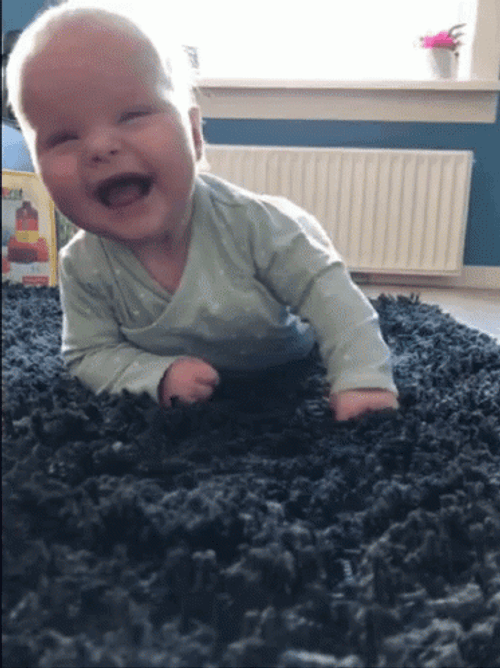
![]()

Church Bloopers
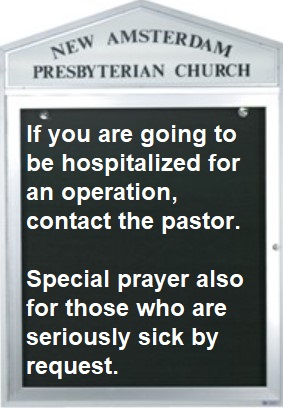
![]()
From my wife Donna



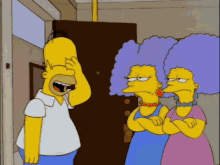
![]()
Sometimes you fall gracefully
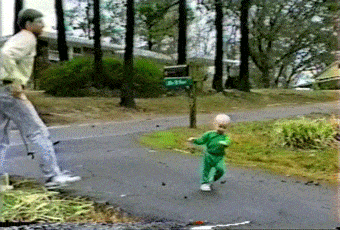
And "What's Dad going to do with those clippers?????
![]()
Only in Ireland

![]()
Many News items, stories, recipies, jokes and poems are taken from these sites with their generous permission.
Please support them my clicking on the links below and sign up for their free newsletter.
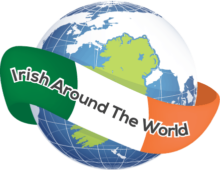 .....
..... ....
....
Subscribe
to IrishCentral  ..
.. ....
....

 .........
.........![]() ......
......
![]()
Welcome to
Tír na mBláth
(Land of Flowers)
Tír na mBláth is one of hundreds of branches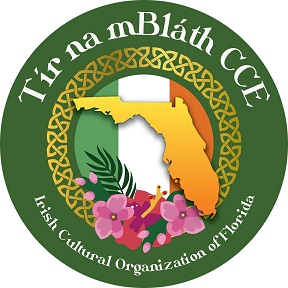 throughout the world of Comhaltas Ceoltóirí Éireann (CCÉ) pronounced "kol-tus
kyol-tori air-in", the largest group involved in the preservation of
Irish music, dance and song.
throughout the world of Comhaltas Ceoltóirí Éireann (CCÉ) pronounced "kol-tus
kyol-tori air-in", the largest group involved in the preservation of
Irish music, dance and song.
Our board and membership is made up of Irish, Irish descendants, and all those who support, celebrate and take pride in the preservation of Irish culture.
We also aim to promote good will and citizenship.
Interested in belonging to Tír na mBláth? Feel free to download our membership form
Facebook page is at Tír na mBláth
Our meetings and several events are held at Tim Finnegan's Irish Pub in Delray Beach Florida.
![]()
Well, that's it for this week.
Slán abhaile
Pronunciation: slawn a-wol-ya
Meaning: Safe Home
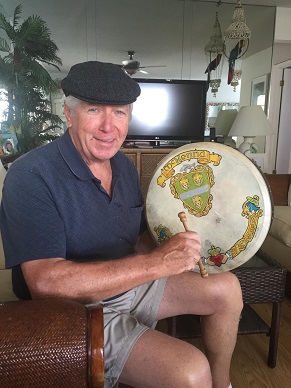 ...
...
Sláinte, Tom Guldner (Tommy Mac)
Slán agus beannacht, (Good-bye and blessings)
Number of visitors to this website since Sept 2022
..